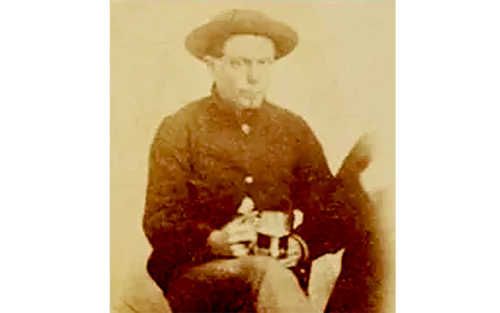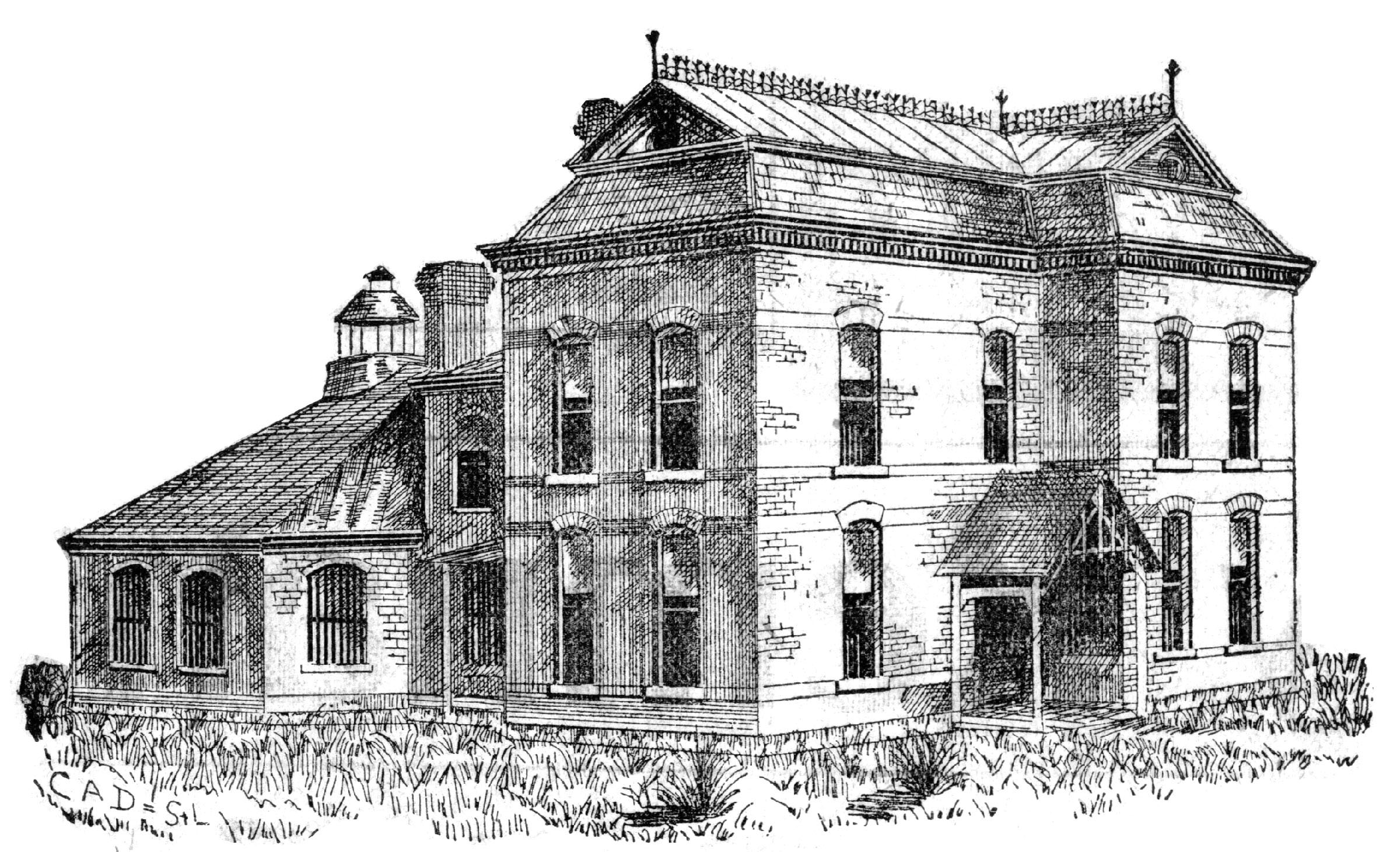This following account of the 1867 robbery of the treasury of Daviess County, MO, is recorded in the 1882 History of Daviess County (pp. 285-288). John Reno was later sentenced to serve 25 years in prison for this crime:
THE SAFE ROBBERY
“On the night of the 17th of November, 1867, a gang of burglars headed by the notorious John Reno, of Indiana, broke into the safe of the treasurer of Daviess County, MO, and made way with what funds they could get, in all some twenty-three thousand dollars. They were pursued, but escaped capture, temporarily. However, they were traced and watched and were at last captured in Indiana and brought back to Daviess county and put in jail. Their names were John Reno, Frank Sparks, Daniel Smith, Silas Smith and Burdet Clifton, and to make assurance doubly sure that they did not escape, a guard of 10 men were employed to secure their safety. There were jailed December 15, 1867.
HOW IT WAS EFFECTED
On Saturday, the 16th of November, 1867, John Reno and a confederate arrived in Gallatin for the purpose of robbing the treasury safe, which had some $25,000 in its vaults. The work was to have been done that night, but Reno made the remark that he had traveled so far and was so tired that he would defer the job to the next night, and right there was where he got caught. Had he done the job Saturday night, the start would have been sufficient to have broken the trail, and his confederates to have got over their tremor, but the authorities were after them so quick that the suspected parties gave themselves away and betrayed Reno in their confusion. He and his friend lay in the woods all day Sunday, and that night the work was done.
The clerk’s safe was first attached by mistake, and blown open with powder, but on the treasurer’s safe a hinge was wrenched off by a jimmy, and then pried so as to reach the bolts and force them back; then the safe was cleaned out and they left. One of the outside parties suspected was caught with some counterfeit gold coin that was known to have been in the safe for years. This brought him up, and the prospects of being lynched soon opened his mouth, and Reno was followed and caught at Indianapolis, Indiana. A man by the name of Sparks was also captured and brought here, but proved he was not the confederate with Reno and was released.

John Reno of Seymour, IN, broke into the safe of the treasurer of Daviess County, MO, and made way with $23,000. The Reno Brothers Gang became notorious nationally for the first great American train robbery in America.
There was proof enough to convict Daniel Smith, Silas Smith, Burdet Clifton, and Clay Able as being accessory to the fact, if not actual participant, but Reno would not give them away, and some heavy lying got them off. The judge took it all out on Reno by a sentence on one, while others were equally guilty before the law, at least for a short term in the same institution, that the assistant prosecutor arose in his place and at once opposed the action of the judge. He was informed that justice was what the people of Daviess county wanted – not revenge. The judge saw his mistake and reduced the sentence to twenty-five years. To mitigate the sentence, $500 had been sent out by Reno’s mother to help pay the loss, and Frank Reno paid $2,000, and they did not expect over a ten years’ sentence. Had the others been put in for from five to ten years, all would have been satisfied. Reno deserved his sentence, but the rest should not have been allowed to escape their punishment entirely.
The trial took place January, 1868. The amount of county funds stolen amounted to –
- In cash and county warrants — $23,618.19
- Stolen money recovered — $2,275
- Stolen Warrants recovered – 4,250
- Paid by Frank Reno – 2,000
- Total loss — $15,093.19
The money and warrants were returned by John Reno after he was captured.
Deliverance Nichols, the deputy county clerk, left the city, and as suspicion fell on him, he was sent after and caught near Milwaukee, Wisconsin. Two twenty dollar compound interest notes were found on him which belonged to the county. He was released on $2,000 bail, but there seems to have been nothing further done in his case. The safe arrival of John Reno in the penitentiary at Jefferson City closed the record of this crime. Captain Ballinger, sheriff, was an active worker in the capture.
THE SEQUEL
After ten years of incarceration John Reno was released. He paid a few thousands and an attempt was made to swindle him out of the money and keep him in prison. The order reducing his term of imprisonment had been placed upon the prison record, and afterward it was effaced. A copy of the order was, also, secured, showing that his sentence had been commuted to ten years. He was released upon $18,000 bail, in case that the commuting of sentence should prove wrong. He was taken out on a writ of habeas corpus and the above bail furnished by his Indiana friends.
He was met by his friends in great number and the bail promptly furnished, and to a friend in Jefferson City he wrote that a hundred thousand dollars would have been furnished. His friends claimed that ten years was a full punishment for the Gallatin burglary, and that it was the express company that was trying to prevent his release, and the company was notified that his incarceration again through their instrumentality would be terribly avenged, and that no express company should put him in jail. This was the substance of the letter, which was published at the time in the Jefferson City Tribune. He had, according to the statement of the warden, been an exemplary prisoner during his confinement.
And, last but not least, to Daviess county was the fact that the note given by Frank Reno for $2,000 was never paid. The trouble was that the $500 paid by his mother, the turnover of the warrants and this note, which were intended to mitigate his punishment, did not have the desired effect, but it was certain that a forty years’ sentence, which was only reduced by the appeal of the prosecution of the State, showed the judge was combining justice and revenge. This is Reno’s statement. The note was turned over in 1876 to the county attorney, William M. Rush, to collect but it remains unpaid to this day.

